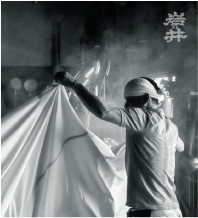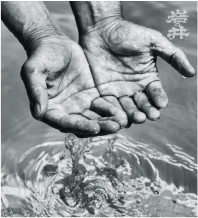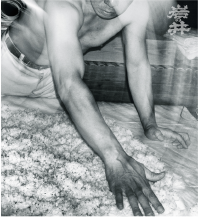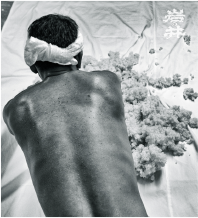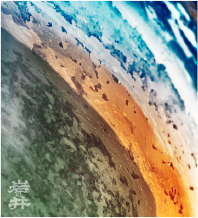SAKE × ART
IWANOI SAKE PROJECT
IWANOI SAKE
PROJECT
Our Goals
Turning Historical Heritage Into Legacy for Tomorrow
Making Japanese Sake
a Culture Shared by All
We dedicate to introducing the world new experiences using cultural heritage, both tangible and intangible, in Japan. This way we aim to ensure that Japan’s history, traditional culture and nature are passed down to next generations and outlast time as legacies for tomorrow.
We present you the sake cellar that produces Iwanoi: Iwase Shuzo—a very rare kura (brewery) even for Japan that preserves the original building ever since its founding. The thatched-roofed main dwelling was built over 400 years ago, bearing an enduring testimony to the 300-year longevity of the brewhouse.
It is also one of Japan’s few breweries preserving vintage sake, with the oldest one dating back to 1969. No wonder that the Iwase-brewed sake was chosen to serve up guests at the Tokyo Summit dinner party, and had former Prime Minister Hayato Ikeda a fond drinker, not to mention its award-winning record.
Chiba Prefecture takes pride on Iwanoi, a sake that besides being produced at a kura packed with history, projecting the heart and soul of its brewers, it has benefited from the savoir faire of creative artists who breathed new life into it, and subsequently contributed to Iwanoi scoring 95 points on the prestigious Parker’s quality scale. This project was born out from our desire to make this remarkable brew known to sake lovers not only in Japan but all around the world.
Iwase Brewery will be opening its doors to special guests eager to relish touring its cellar, staying over, and tasting its sake and food—in a nutshell, what we call “SAKE Tourism.”
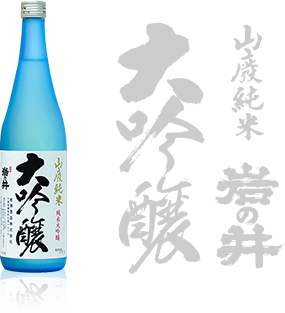
- Junmai Daiginjo-shu Iwanoi Yamahai
-
- Brewery: Iwase Shuzo
- Variety of Rice Used: Yamadanishiki
- Rice Polishing Ratio: 40%
- Yeast: Sake Yeast No. 6/Brewing Society of Japan
- Sake Meter Value: +6
- Acidity: 2.2
- Alcohol Content: 15o

A pure expression of steamed rice that will definitely warm the hearts of rice lovers. It has a refined, elegant and complex aroma with plenty of fruitiness. Smooth, round and pleasant, this makes an exceptional sake with a strong personality.
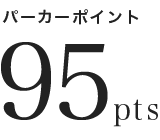
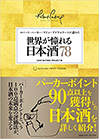
A pure expression of steamed rice that will definitely warm the hearts of rice lovers. It has a refined, elegant and complex aroma with plenty of fruitiness. Smooth, round and pleasant, this makes an exceptional sake with a strong personality.
Four centuries of friendship: the Mexicans and our first encounter
In September 1609, a Spanish galleon was caught up in a storm and ran aground off the Coast of Onjuku, Chiba Prefecture, with most of its passengers and crew being drifted ashore on Iwawada Beach, Onjuku Town. (The masts of the vessel were used as beams for the roof of the Iwase brewery’s main dwelling.) The ship carried 373 passengers and crew on board, including the Spanish noble Don Rodrigo, who had just concluded his tenure as Governor General of the Philippines, and was heading back to New Spain (a viceroyalty of the Spanish Empire that included Mexico).
Unfortunately 56 members perished, but the 317 survivors were rescued by the locals of Onjuku. The villagers sympathized with the shipwrecked crew shivering out of cold and fear, and thus dedicated to rescuing them. They offered them warm clothing and were unsparing in food supplies. (as per Don Rodrigo Nihon kenbunroku [Don Rodrigo’s Memoirs of Japan])
Also, it is said that the local female shell divers, also known as ama, picked the stranded sailors up from the cold sea like real-life mermaids, and warmed them up with their own two hands. A few days later, Tadatomo Honda, the lord of Otaki Castle, came to visit accompanied by many retainers. He greeted Rodrigo with a hand-kiss—a typical European practice—and invited him and his people to the castle, where they were widely received with a welcome party.
And it was the same Tadatomo who then introduced Don Rodrigo to the second shogun, Tokugawa Hidetaka, and the retired Shogun Ieyasu, who also received him with exceptional care. During his stay, Rodrigo visited various places, including Edo (actual Tokyo), Kyoto and Osaka, and was left extremely impressed by the Japanese people and their culture, which he describes in detail in his memoirs. One year later, in August 1610, the crew sailed back to New Spain on board of a ship which construction Ieyasu ordered to William Adams (known in Japanese as “Miura Anjin”) and was named San Buena Ventura (literally meaning “good fortune”).
If you are interested in the SAKE x ART Project, please contact us at info@enysi.com.
Copy e-mail addressJuan Carlos PINTO
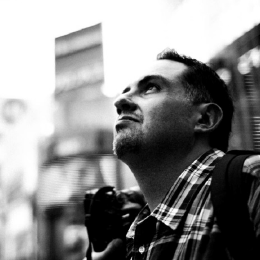
Born in Zacatecas, Mexico in 1980. He studied literature and linguistics at the Autonomous University of Zacatecas, followed by a Master’s degree in Spanish literature at the National Autonomous University of Mexico. He pursued a teaching career, and taught art, literature and public speaking to students of middle school, high school and college. He writes short stories and has so far published two books. For five years, he participated in many festivals around Latin America performing as a storyteller. In 2011, he married and moved to Tokyo. He initiated in photography in 2015 and subsequently attended classes of Art and Digital Photography (modules I to III) at Temple University, Japan Campus. Two years later, in 2017, he became the recipient of an Honorable Mention on Street Photography at MONOVISIONS PHOTOGRAPHY AWARDS (UK), and shortlisted in the CUARTOSCURO Magazine Photo Contest “El tiempo 2017” (Mexico). In the year following, he won the Excellence Award at Epson’s “meetup! Selection” competition and was offered to show his work in a group exhibition in May at epSITE. The same year, he was awarded Tokyo’s First Prize in the All Japan Photographic Exhibition. What’s more, Carlos was selected to display his work in an art collection sponsored by the Agency for Cultural Affairs, State of Zacatecas, Mexico. Therefore, Zacatecas’s Institute of Culture hosted his solo exhibition titled “Solitary traces of light” (Hikari no Kodokuna Kiseki) from March to June 2018. His photos have also been featured in a number of newspapers and magazines in Japan, such as Tokyo Shimbun and Metropolis, and in Mexico, such as El Sol de Zacatecas and CUARTOSCURO. Currently, Carlos is actively showcasing his work in various exhibitions.
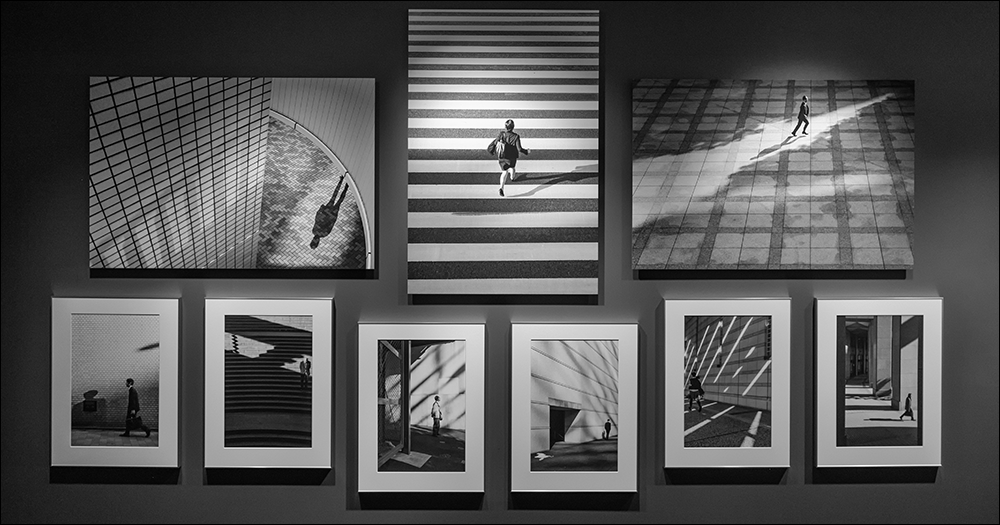
Riyoo KIM
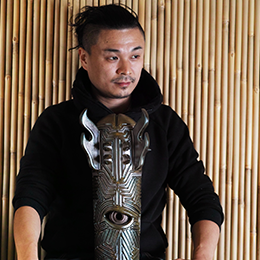
Born in Osaka Prefecture (Japan) in 1980, to a Japanese father and a South Korean mother.
In 2006, he completed his postgraduate course at the Graduate School of Art Production, Osaka University of Arts.
His work has been featured nationally and internationally in various group and solo shows including: “Toyota Art Competition ‘07” at Toyota Municipal Museum of Art (Aichi, 2007), “KOBE Biennale 2009” at Kobe Meriken Park (Hyogo, 2009) where he was awarded the Second Prize in the Contemporary Ceramic Exhibition, “BASARA” at Spiral Hall (Tokyo, 2010), “Yokohama Triennale 2011” at Yokohama Museum of Arts (Kanagawa, 2011), “ARTs of JOMON” at hrgrp Gallery (New York, 2013), “Paramita Exhibition of Ceramic Art Awards” at Paramita Museum (Mie, 2013), “NEO FOLK” at Ikkan Gallery (Singapore, 2014), and “Hypotharamaniac” at Art Gallery X, Nihombashi Takashimaya Department Store (Tokyo, 2014). His featuring in public collections includes the Treasure Gallery of Zojoji Temple—the main temple of Pure Land Buddhist school.

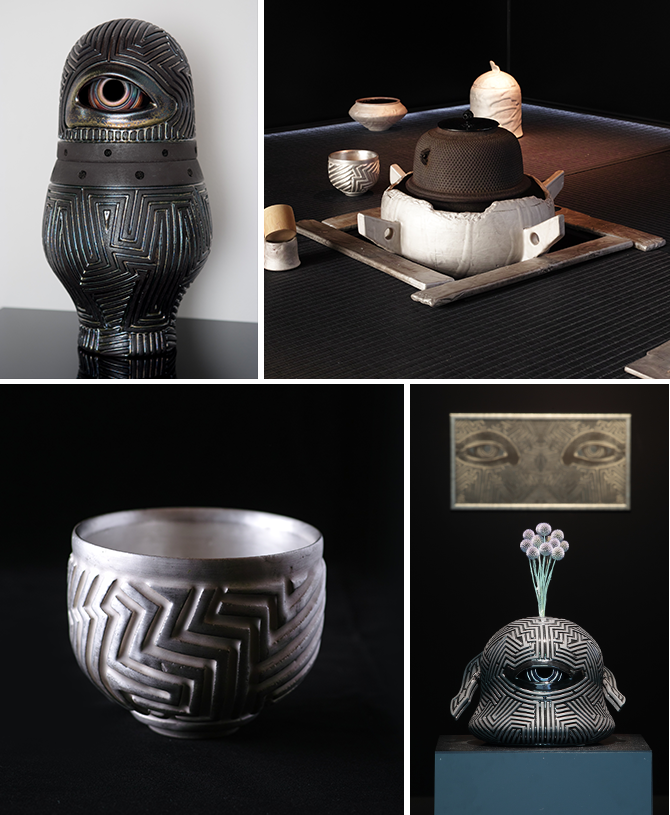
These special label images were captured by Mexican photographer Juan Carlos Pinto.
This way, 400 years later, Iwase Brewery and Mexico are reunited through a Mexican photographer’s artistry.
This project enjoys the endorsement of the Embassy of the United Mexican States in Japan.

If you are interested in the SAKE x ART Project, please contact us at info@enysi.com.
Copy e-mail address



